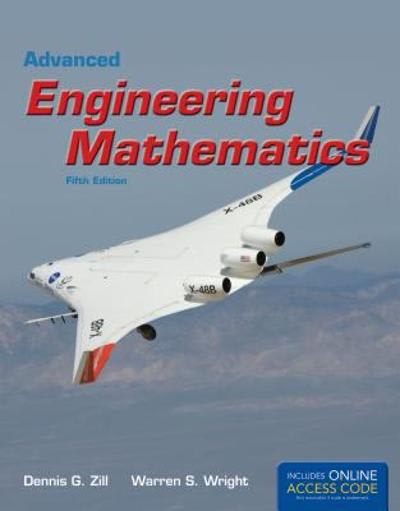Question
The student will compare empirical data and a theoretical distribution to determine if an everyday experiment fits a discrete distribution. The student will compare technology-generated
- The student will compare empirical data and a theoretical distribution to determine if an everyday experiment fits a discrete distribution.
- The student will compare technology-generated simulation and a theoretical distribution.
- The student will demonstrate an understanding of long-term probabilities.
Procedure
The experimental procedure for empirical data is to pick one card from a deck of shuffled cards.
- The theoretical probability of picking a diamond from a deck is _________.
- Shuffle a deck of cards.
- Pick one card from it.
- Record whether it was a diamond or not a diamond.
- Put the card back and reshuffle.
- Do this a total of ten times.
- Record the number of diamonds picked.
- Let X = number of diamonds. Theoretically, X ~ B(_____,_____)
Organize the Data
- Record the number of diamonds picked for your class with playing cards in Table 4.16. Then calculate the relative frequency.
x
Frequency
Relative Frequency
0
2
__________
1
6
__________
2
7
__________
3
9
__________
4
4
__________
5
2
__________
6
4
__________
7
1
__________
8
0
__________
9
0
__________
10
0
__________
Table 4.16
- Calculate the following:
- x= ________
b.s = ________
- Construct a histogram of the empirical data.
Figure 4.6
Theoretical Distribution
- Build the theoretical PDF chart based on the distribution in the Procedure section.
x
P(x)
0
1
2
3
4
5
6
7
8
9
10
- Calculate the following:
- = ____________
- = ____________
- Construct a histogram of the theoretical distribution.
Figure 4.7
Using the Data
NOTE:RF = relative frequency
Use the table from the Theoretical Distribution section to calculate the following answers. Round your answers to four decimal places.
- P(x = 3) = _______________________
- P(1 < x < 4) = _______________________
- P(x 8) = _______________________
Use the data from the Organize the Data section to calculate the following answers. Round your answers to four decimal places.
- RF(x = 3) = _______________________
- RF(1 < x < 4) = _______________________
- RF(x 8) = _______________________
Discussion Questions
For questions 1 and 2, think about the shapes of the two graphs, the probabilities, the relative frequencies, the means, and the standard deviations.
- Knowing that data vary, describe three similarities between the graphs and distributions of the theoretical, empirical, and simulation distributions. Use complete sentences.
- Describe the three most significant differences between the graphs or distributions of the theoretical, empirical, and simulation distributions.
- Using your answers from questions 1 and 2, does it appear that the two sets of data fit the theoretical distribution? In complete sentences, explain why or why not.
- Suppose that the experiment had been repeated 500 times. Would you expect Table 4.16 or Figure 4.6 to change, and how would it change? Why? Why wouldn't the other table(s) change?
Chapter 6 - Normal Distribution (Pinkie Length)
Student Learning Outcomes
- The student will compare empirical data and a theoretical distribution to determine if data from the experiment follow a continuous distribution.
Collect the Data
Measure the length of your pinky finger (in centimeters).
Randomly survey 30 adults for their pinky finger lengths. Round the lengths to the nearest 0.5 cm.
6.0
6.5
6.5
6.0
7.0
5.5
6.0
7.0
6.0
7.0
5.5
6.5
6.5
6.5
6.0
5.0
5.5
6.0
6.0
5.0
7.5
5.0
5.5
6.0
6.0
5.5
6.0
5.5
6.0
6.0
Table 6.2
- Construct a histogram. Make five to six intervals. Sketch the graph using a ruler and pencil. Scale the axes.
Figure 6.11
- Calculate the following.
- x= _______
b.s = _______
- Draw a smooth curve through the top of the bars of the histogram. Write one to two complete sentences to describe the general shape of the curve. (Keep it simple. Does the graph go straight across, does it have a v-shape, does it have a hump in the middle or at either end, and so on?)
Analyze the Distribution Using your sample mean, sample standard deviation, and histogram, what was the approximate theoretical distribution of the data you collected?
- X ~ _____(_____,_____)
- How does the histogram help you arrive at the approximate distribution?
Describe the Data Using the data you collected complete the following statements. (Hint: order the data)
Remember
(IQR = Q3 - Q1)
- IQR = _______
- The 15th percentile is _______.
- The 85th percentile is _______.
- Median is _______.
- What is the theoretical probability that a randomly chosen pinky length is more than 6.5 cm?
- Explain the meaning of the 85th percentile of this data.
Theoretical Distribution Using the theoretical distribution, complete the following statements. Use a normal approximation based on the sample mean and standard deviation.
- IQR = _______
- The 15th percentile is _______.
- The 85th percentile is _______.
- Median is _______.
- What is the theoretical probability that a randomly chosen pinky length is more than 6.5 cm?
- Explain the meaning of the 85th percentile of this data.
Discussion Questions
Do the data you collected give a close approximation to the theoretical distribution? In complete sentences and comparing the results in the sections titled Describe the Data and Theoretical Distribution, explain why or why not.
Step by Step Solution
There are 3 Steps involved in it
Step: 1

Get Instant Access to Expert-Tailored Solutions
See step-by-step solutions with expert insights and AI powered tools for academic success
Step: 2

Step: 3

Ace Your Homework with AI
Get the answers you need in no time with our AI-driven, step-by-step assistance
Get Started


